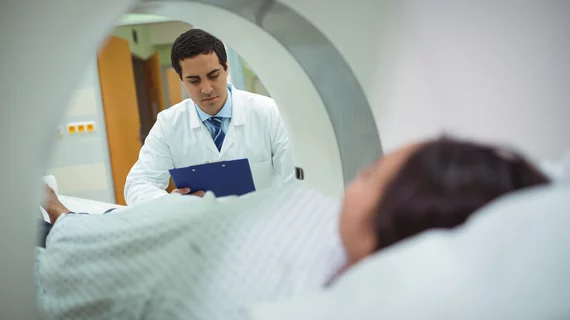Understanding patient experience may reduce unnecessary imaging tests
Information gained from imaging tests, contributions to a patient’s health care journey, a patient’s experience during testing and impacts on emotion are patient-centered outcomes that should be considered more when evaluating and reporting imaging tests, according to a new study published online Oct. 25 in the Journal of the American College of Radiology.
The U.S. is one of the highest users of advanced imaging tests among high income countries, however this has contributed to a growing concern that some imaging tests are over utilized, and patient experience isn’t fully considered, wrote Monica L. Zigman Suchsland, of the department of family medicine at the University of Washington in Seattle, and colleagues.
“To promote judicious use of imaging tests, initiatives to better understand patients’ experiences of these tests are vital,” Zigman Suchsland et al. wrote. “This could facilitate the design and development of tools that enable physicians and patients to navigate the complexities of decision making together, taking into account patient-centered outcomes.”
For their study, the researchers interviewed 45 patients (average age 53 years) from four primary clinics who were asked to recount their experience of having an x-ray, CT, MRI or ultrasound in the last year. Thirty had undergone a diagnostic imaging test and 15 underwent imaging for screening or monitoring, according to the researchers.
Four themes related to patient-centered outcomes were identified from the interviewees: knowledge gained from the imaging test, its contribution to their overall health care journey, physical experiences during the test procedure and impacts of the testing process on emotions.
Overall, measurement and reporting patient-centered outcomes should be considered more often in diagnostic research. Additionally, the researchers noted that certain tools that can enhance communication between providers and patients may also promote shared decision-making around the use and impact of imaging tests.
“In clinical practice, discussing with patients why a test is being ordered, what the other options are (including other tests, or not testing at all), and how the information gained will inform care can facilitate improvements in the decision-making process and set clearer expectations of imaging,” the researchers wrote. “Our results suggest that the full range of risks and benefits that patients perceive from imaging testing is more complex than ‘test accuracy’ alone.”
The study is part of the Patient-Centered Research for Standards of Outcomes in Diagnostic Tests (PROD) project, which aims to provide guidance for patients, clinicians and researchers on more comprehensive ways of evaluating the risks and benefits of imaging tests.

